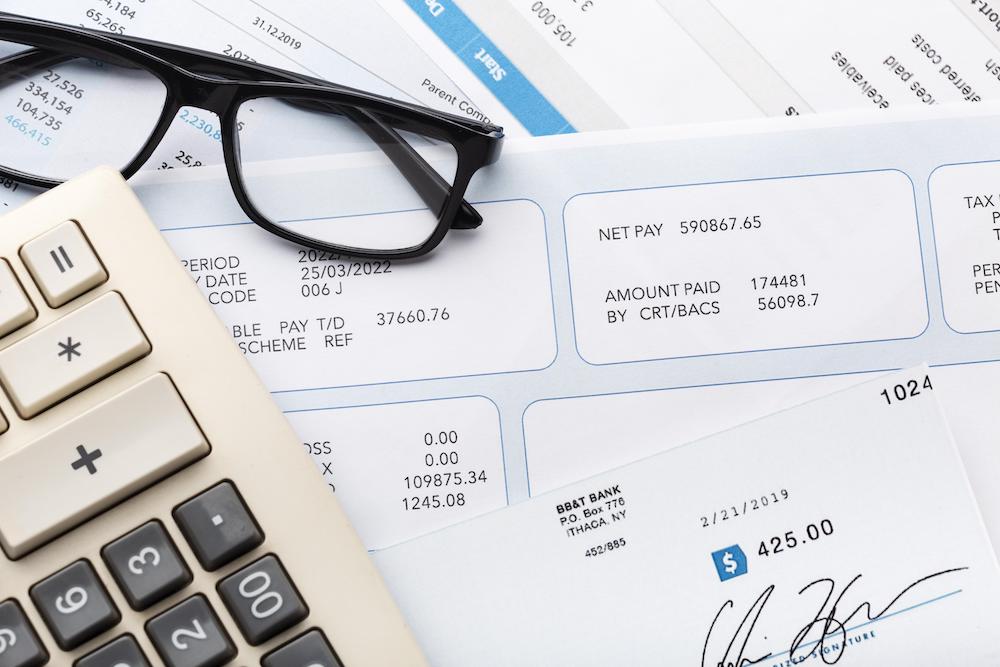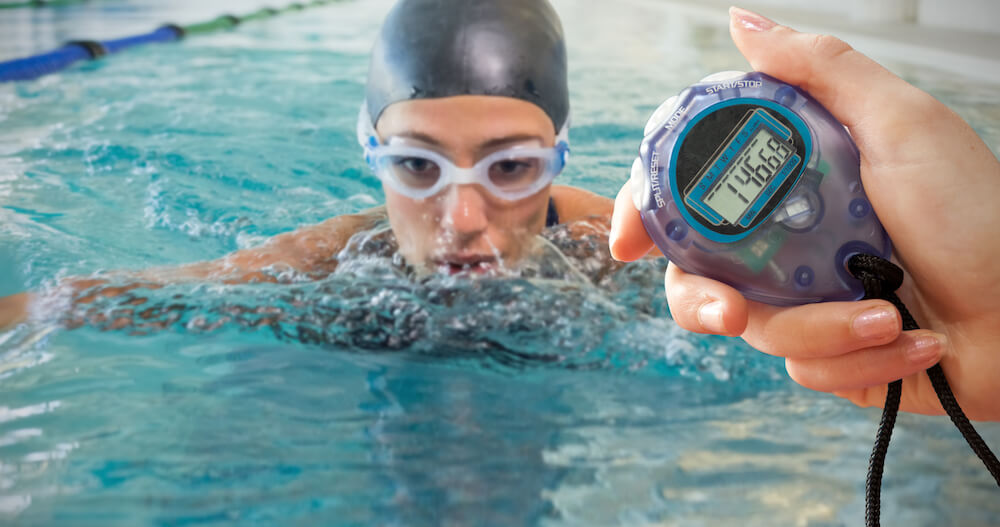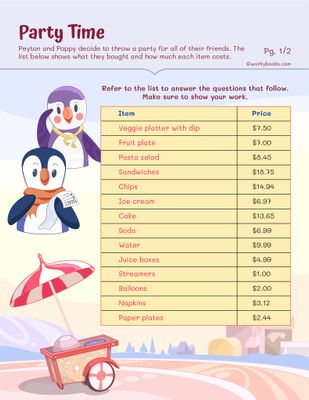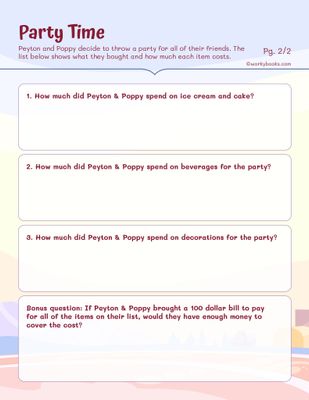Teaching Decimals in Grades 3 to 5: Free Resources

Introduction to Decimals:
As students progress through the upper elementary grades, they are introduced to a new mathematical concept: decimals. Decimals are everywhere in our daily lives, and understanding how to use them is an important skill that will help you in many ways as you grow up.
What are decimals?
Decimals are numbers that represent a part of a whole, just like fractions. However, decimals are written using a decimal point and place value system, making them easier to read and work with in many situations.
For example,
- 0.5 represents one-half
- 0.25 represents one-quarter.
Why are Decimals Important?
Decimals are used in various real-life situations, such as measuring, money, and calculations. Understanding decimals helps students develop a more comprehensive understanding of numbers and their applications in the world around them. Decimals also serve as a foundation for more advanced mathematical concepts, such as percentages and ratios, which students will encounter in later grades.
Decimals help us express parts of a whole, just like fractions, but in a different way.
Now, think about money. When you go to the store, you might see prices like $1.99 or $5.99.

The numbers after the decimal point represent cents, which are a part of a dollar. Without decimals, it would be much harder to understand and work with money.
Examples of Decimals
- Decimals are also important when measuring things. Let’s say you want to measure the height of a plant. You might find that it’s 3 and a half inches tall. Using decimals, you can write this as 3.5 inches. This is a more precise way of measuring and expressing the height than just saying “about 3 inches.”
- In sports, decimals are used to keep track of scores and statistics. For example, in basketball, decimals are used to track scoring, rebounds, and assists. A player who scores 25 points, grabs 10 rebounds, and dishes out 5 assists would have a stat line of 25.10.5. Decimals are also used in sports to measure time.
- In swimming, decimals are used to record the time it takes a swimmer to complete a race. A swimmer who finishes a race in 146.69 seconds would have a time of 146.69.
- In track and field, decimals are used to measure the distance that an athlete runs or jumps. A runner who runs a 100-meter dash in 10.09 seconds would have a time of 10.09. Decimals are an important part of sports because they provide a more precise way to measure and record scores, statistics, and time.

Introducing Decimals in Grade 3:
Decimals are introduced in grade 3 as a way to represent parts of a whole. They are closely related to fractions, and students often learn to convert simple fractions to decimals. Decimals are written using a decimal point and place value system, which makes them easier to read and work with than fractions. In grade 3, students learn about the basics of decimals, including place value, comparing decimals, and rounding decimals. They learn to convert simple fractions, such as 1/2 and 1/4, to their decimal equivalents (0.5 and 0.25, respectively). They also begin to apply decimals to real-world problems. This helps students understand that decimals and fractions are simply different ways of representing parts of a whole.
Grade 3 Decimals Worksheets:
- Introduction to decimals
- Understanding decimals as parts of a whole
- Relating decimals to fractions (e.g., 0.5 = 1/2, 0.25 = 1/4)


Exploring Decimals in Grade 4:
In grade 4, students dive deeper into decimals, learning about place value and comparing decimals. They learn that the digits to the right of the decimal point represent tenths, hundredths, and thousandths. Students also learn to compare decimals using place value and number lines, understanding that the more digits a decimal has, the more precise it is.
Grade 4 Decimal Worksheets:
- Place value with decimals
- Understanding tenths and hundredths
- Reading and writing decimals to the hundredth place
- Comparing decimals
- Comparing decimals using place value
- Ordering decimals from least to greatest and greatest to least
- Fraction to Decimals
- Converting fractions to decimals
- Use decimal notation for fractions with denominators 10 or 100.
Teaching Decimals in Grade 5:
Grade 5 is when students start to apply their knowledge of decimals to real-world situations and more complex mathematical problems. They learn to perform operations with decimals, such as addition, subtraction, multiplication, and division. Students also explore the relationship between decimals and money, learning to perform financial calculations and solve real-life problems involving decimals.
Grade 5 Decimal Worksheets:
- Adding decimals with like place values
- Subtracting decimals with like place values
- Multiplying decimals
- Multiplying decimals by whole numbers
- Multiplying decimals by decimals (introduction)
- Dividing decimals
- Dividing decimals by whole numbers
- Dividing whole numbers by decimals (introduction)
- Converting between fractions and decimals
- Converting fractions to decimals
- Converting decimals to fractions
- Relating decimals to money
- Understanding decimals in the context of money (e.g., $0.50, $1.25)
- Solving real-world problems involving money and decimals
- Relating decimals to measurement
- Using decimals in measurement (e.g., length, weight, volume)
- Rounding decimals
- Rounding decimals to the nearest whole number
- Rounding decimals to the nearest tenth
- Expanded Form of Decimal
- Solving real-world problems involving addition and subtraction of decimals
What are some common mistakes that students make when performing operations with decimals?
- First, students may forget to place the decimal point in the answer. This can happen when adding or subtracting decimals, as well as when multiplying or dividing decimals.
- Second, students may round decimals incorrectly. When rounding decimals, it is important to follow the rules for rounding. For example, if the digit to be rounded is less than 5, the preceding digit should stay the same. If the digit to be rounded is 5 or greater, the preceding digit should be rounded up.
- Third, students may make errors when multiplying decimals. One common error is multiplying the decimal points instead of the numbers. Another common error is forgetting to multiply the place values of the decimals.
- Fourth, students may make errors when dividing decimals. One common error is dividing the numerator and denominator by the same number. Another common error is forgetting to place the decimal point in the quotient.
- Finally, students may not understand the meaning of the results of decimal operations. For example, students may not understand that the decimal point in a decimal number represents a fraction.
In conclusion, addressing these common mistakes is important for helping students master decimal operations. Teachers can provide explicit instruction on the rules for performing decimal operations, as well as opportunities for students to practice applying these rules. With sufficient instruction and practice, students can overcome these common mistakes and develop a solid understanding of decimal operations
Best of luck teaching decimals!
NGT



